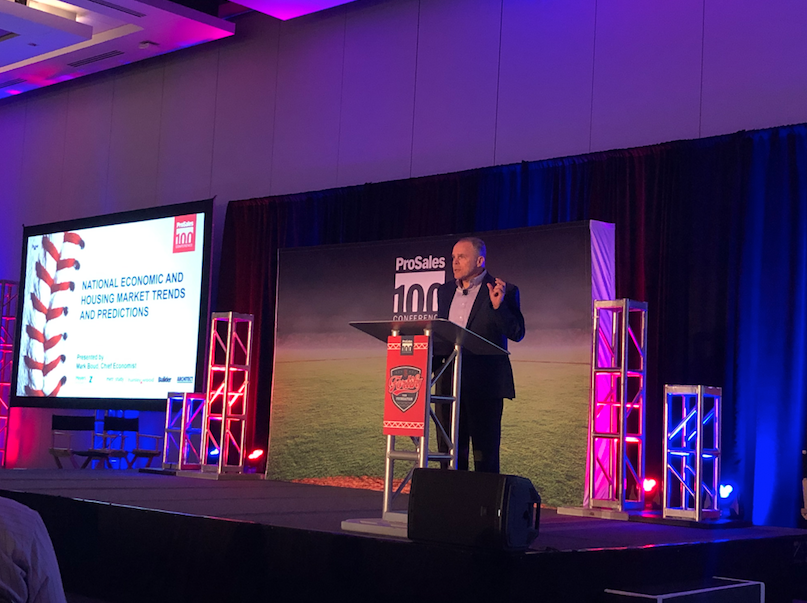The economy is forecast to experience a downturn beginning in 2022, senior vice president and chief economist of Meyer’s Research Mark Boud said at the 2020 ProSales 100 Conference in Arlington, Texas. Boud said the 2-10 treasury spread, a strong historical indicator for recessions, has gone negative, a sign that a recession is coming within the next 18-24 months. Boud also said beginning in 2022, job gains for the national economy will turn negative and are expected to remain negative through 2025.
Boud said corporate debt will reach an all-time high of 49% of Gross Domestic Product (GDP) in 2020 and GDP would need to grow at 9% annually for the next several years just to maintain debt levels where they are currently. Conversely, GDP growth has waned in late 2018 and 2019 after experiencing a bump from the tax cuts from the Trump administration.
“The eventual recession will be caused by higher costs, much of which is tariff-related, higher labor costs, reduced margins, and reduced investment in infrastructure,” Boud said during his Economic Outlook presentation.
While not causing the expected recession, the housing market will remain under-supplied for the next five years, Boud said. The percentage of housing inventory is consistently higher than closings for all values about $500,000, according to Boud, creating a “top heavy” housing market. Below, $500,000, the opposite is in effect, where the percentage of housing inventory is below closings, suggesting pent-up demand in the low-value housing market.
To compound the extremes at the ends of the housing market, housing starts are expected to stagnate through 2025, as a result of increasing material costs, labor market tightness, and high labor costs.
“I don’t think labor is going to get less expensive or even more plentiful in the construction industry ever again” Boud said. “Even in those recession years, I’m not sure we can supply enough construction workers that we’re losing on an annual basis.”
With rising costs of labor, Boud forecasts the housing market will be forced to adopt new methods with reduced labor, such as factory building. Boud said home builders of the future may be “assemblers,” rather than builders, assembling on-site components. While builders will need to continue to innovate, Boud said the remodeling market boom is expected to continue and remain as big or even bigger than the new home market moving forward. Boud said the development of technology will also have large ramifications in the near future of the construction industry.
“The fact that cars can drive themselves, it will take a while for the laws to catch up with us,” Boud said. “That technology is already there and will have a dramatic impact on how we build homes. Most designs will change and we’ll begin to see more high-rise developments that have been shelved can be penciled because the parking ratio is going to drop a lot. So we’ll see more high-density development.”



